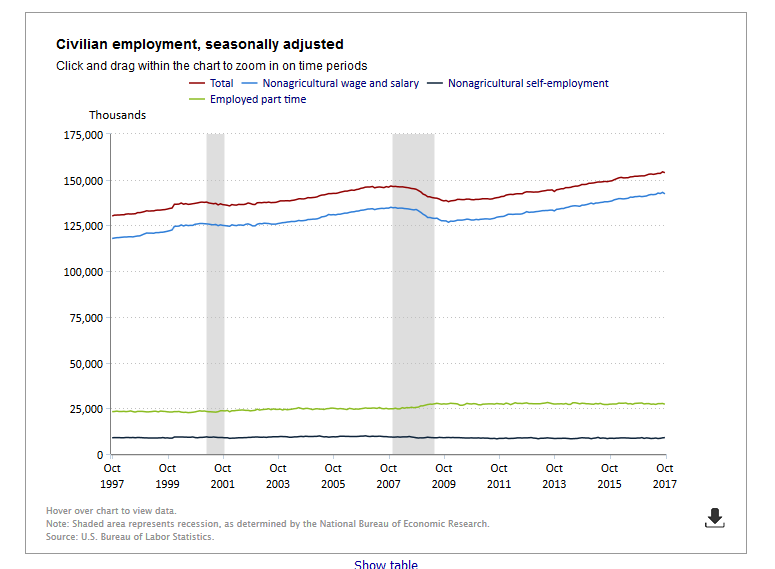Employment Blog November 2017
This Employment Blog is taken from the U S Department of Labor, Bureau of Labor Statistics. In October, nonfarm payroll employment rose by 261,000, after changing little in September. The unemployment rate edged down to 4.1 percent in October. Employment rose sharply in food services and drinking places, mostly offsetting a decline in September that largely reflected the impact of Hurricanes Irma and Harvey. Job gains also occurred over the month in professional and business services, manufacturing, and health care. Incorporating revisions for September and August, which increased nonfarm payroll employment by 90,000, monthly job gains have averaged 162,000 over the past 3 months. This information is detailed in Charts 1 and 2 below.
Employment in food services and drinking places increased by 89,000 in October. This followed a decline of 98,000 in September. Many workers in this industry who were off payrolls due to the hurricanes returned to their jobs in October.
Professional and business services added 50,000 jobs over the month, about in line with its average monthly gain over the prior 12 months.
In October, employment in manufacturing increased by 24,000, with job gains in computer and electronic products (+5,000) and chemicals (+4,000). Employment in fabricated metals continued to trend up. Manufacturing has added 156,000 jobs since an employment low in November 2016.
Employment in health care rose by 22,000 in October, as employment continued to trend up in ambulatory care services. Health care has added an average of 24,000 jobs per month thus far in 2017, compared with an average gain of 32,000 per month in 2016.
Employment in other major industries–including mining, construction, wholesale trade, retail trade, transportation and warehousing, information, financial activities, and government–changed little over the month.
Turning now to measures from the household survey, the unemployment rate edged down to 4.1 percent in October and is down by 0.7 percentage point since January. The number of unemployed people declined by 281,000 to 6.5 million in October and has fallen by 1.1 million since January.
Real average hourly earnings for all employees decreased 0.1 percent from September to October, seasonally adjusted, the U.S. Bureau of Labor Statistics reported today. This result stems from no change in average hourly earnings combined with a 0.1-percent increase in the Consumer Price Index for All Urban Consumers (CPI-U). Real average weekly earnings decreased 0.1percent over the month due to the decrease in real average hourly earnings combined with no change in the average workweek. The increase in real average hourly earnings combined with no change in the average workweek resulted in a 0.4 -percent increase in real average weekly earnings over this period. This information is detailed in Chart 3 below.



